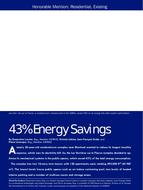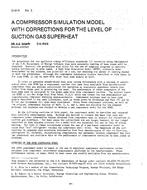This paper provides information on energy savings in mid-rise commercial buildings due to additional thermal mass and for exceeding thermal performance requirements in the building envelope. The paper also shows how to model the thermal properties of concrete to obtain points for optimizing energy performance under the Energy and Atmosphere (EA) credit of LEEDNC v2.2. Obtaining points for this EA credit using the performance path requires modeling with whole-building energy simulation software; and modeling thermal mass effects requires software that models yearly energy use on an hourly basis.
Five-story prototype buildings with plan dimensions of 105 by 105 sq ft. (32 by 32 m) and a window-to-wall ratio of 0.40 have been modeled using the software program VisualDOE. Since the effects of thermal mass vary with climate, the buildings were modeled in six cities representing the range of climates in the US: Miami, Phoenix, Memphis, Salem (Oregon), Denver, and Chicago. The buildings include: EIFS, precast concrete, and curtain walls meeting ASHRAE 90.1-2004 with either structural steel or reinforced concrete frame; and precast concrete walls exceeding ASHRAE 90.1-2004 with either structural steel or reinforced concrete frame.
The energy modeling shows that the effect of thermal mass in concrete framed buildings, combined with thermal improvements to the building envelopes (including walls and windows), lowers energy cost up to 23% relative to the baseline steel framed EIFS buildings. This energy savings qualifies for up to 4 LEED-NC v2.2 points.
Presented at Thermal Performance of Exterior Envelopes of Whole Buildings X – December 2007
Units: Dual
Citation: Thermal Performance of Exterior Envelopes of Whole Buildings X
Product Details
- Published:
- 2008
- Number of Pages:
- 18
- File Size:
- 1 file , 3.2 MB
- Product Code(s):
- D-BldgsX30


